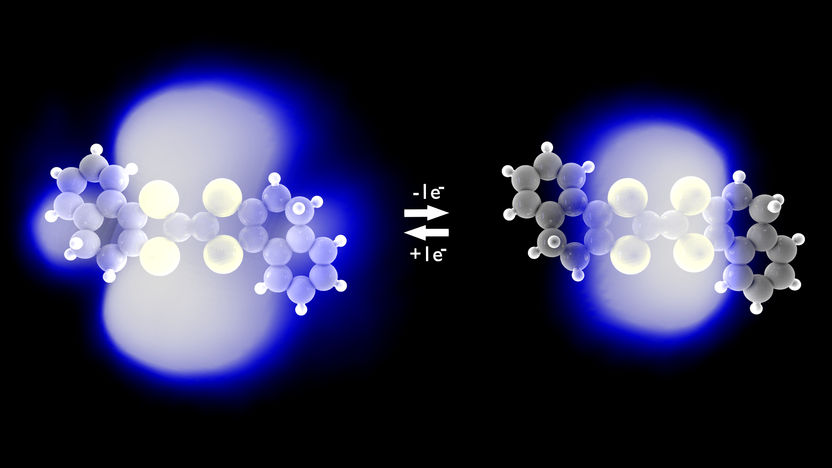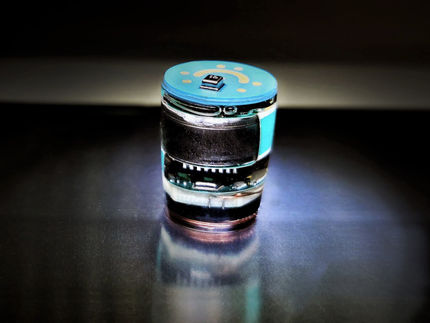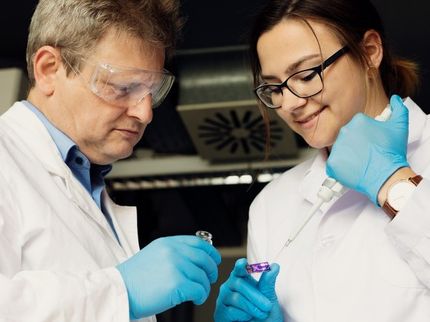Study reveals new method of preparing imaging agents
Dr. Benjamin Rotstein and collaborators unveil an operationally simple method to prepare carbon isotope-labeled versions of drugs and diagnostics
Dr. Benjamin Rotstein and collaborators unveil an operationally simple method to prepare carbon isotope-labeled versions of drugs and diagnostics.

Dr. Benjamin Rotstein, an associate professor in the University of Ottawa's Faculty of Medicine’s Department of Biochemistry, Microbiology and Immunology.
Faculty of Medicine, University of Ottawa
The development of new pharmaceuticals relies on the ability of scientists to design elegantly specific drugs for targeted clinical trials. And the isotopic labeling of drug candidates in research labs is crucial in this overall effort.
In a new study, Dr. Benjamin Rotstein’s lab at the uOttawa Faculty of Medicine has collaborated with colleagues to unveil an operationally simple method to prepare carbon isotope-labeled versions of drugs and diagnostics. They developed a method to exchange a single atom in amino acids – building blocks of proteins that are also used to prepare molecules – for its isotope.
“This is really important in drug development because we want to know where the drug goes in the body, how is it metabolized and eliminated so we can plan appropriate dosing and toxicity studies,” says Dr. Rotstein, an associate professor in the Faculty of Medicine’s Department of Biochemistry, Microbiology and Immunology.
The work was described in a paper in Nature Chemistry, a high-impact journal that also published a separate article on the study in which two Danish scientists at Aarhus University described the team’s methods as “important to the field.”
Dr. Rotstein’s lab initially designed their experiments to work like a catalyst that our bodies use: pyridoxal phosphate, which removes the carboxylic acid from amino acids and is the active form of vitamin B-6. But he says they wanted to make it run in reverse, and it turned out the mechanism was a little different than they initially expected.
“We’re actually adding carbon dioxide, then removing the acid. So it’s a different mechanism that allows us to consider even better catalysts and expanding the scope further beyond amino acids,” he says.
The research was done in collaboration with University of Alberta colleagues and chemists at Sanofi, the French pharmaceutical company. Dr. Rotstein’s lab did the carbon-11 studies and worked with these collaborators to unveil the mechanism of the reaction. His lab uses carbon-11 because it’s radioactive in a way that works well for medical imaging.
What are the next steps for his uOttawa lab? Dr. Rotstein and his team are now studying how to make the reaction produce only one “mirror-image” version of amino acids so that researchers won’t need to separate them after the fact.
He says they are especially excited about using carbon-11 amino acids to measure the rate that our bodies are producing proteins because this can be an indicator of disease.
“We’re also using these in imaging studies now to learn about metabolism and protein synthesis rates in different tissues,” says Dr. Rotstein, who is also director of the Molecular Imaging Probes and Radiochemistry Laboratory at the University of Ottawa Heart Institute.
Original publication
"Aldehyde-catalysed carboxylate exchange in α-amino acids with isotopically labelled CO2"; Nature Chemistry, 2022.
Original publication
"Aldehyde-catalysed carboxylate exchange in α-amino acids with isotopically labelled CO2"; Nature Chemistry, 2022.
Topics
Organizations
Other news from the department science

Get the chemical industry in your inbox
By submitting this form you agree that LUMITOS AG will send you the newsletter(s) selected above by email. Your data will not be passed on to third parties. Your data will be stored and processed in accordance with our data protection regulations. LUMITOS may contact you by email for the purpose of advertising or market and opinion surveys. You can revoke your consent at any time without giving reasons to LUMITOS AG, Ernst-Augustin-Str. 2, 12489 Berlin, Germany or by e-mail at revoke@lumitos.com with effect for the future. In addition, each email contains a link to unsubscribe from the corresponding newsletter.
Most read news
More news from our other portals
Last viewed contents
Category:Vanadium_minerals
Hydroxocobalamin
Agilent Technologies Opens New X-ray Diffraction Manufacturing Facility in Wroclaw, Poland
Rheopecty
Dichlorocarbene
Edwin_B._Hart

Physicists watch electron transfer in a single molecule
Combined_sewer
Humble_Oil





























































